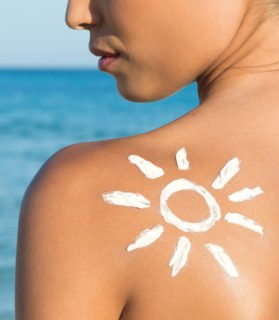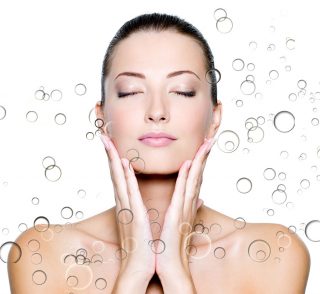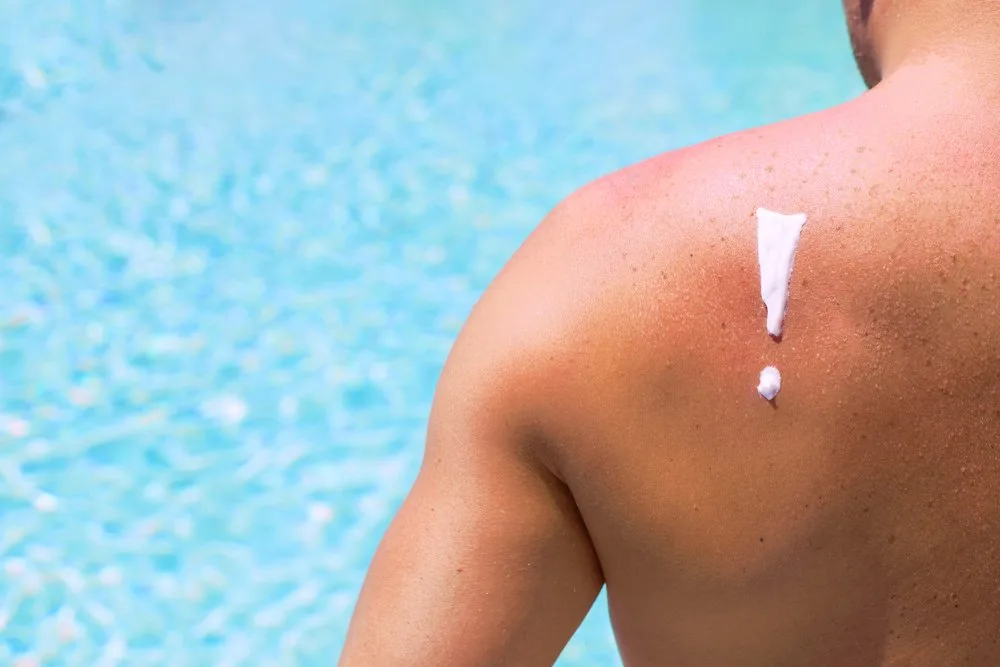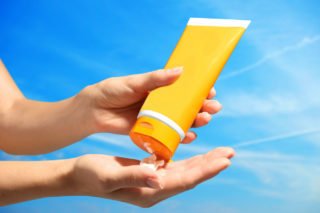As a child enjoying family holidays by the coast, I remember the most hated moment of any day spent on the beach. Besides the one where our parents would announce it’s time to pack up and go home. It was the dreaded moment when my mother would summon us for the periodical reapplication of the sunscreen.
At the time, those sunscreen products were thick, often sticky, mushy white formulations. Mom would smear it all over our faces, shoulders, and necks. Then she would taper it down to our legs and feet. She won no popularity contests in the process, but she couldn’t care less. My sisters and I would obediently wear sunscreen or suffer the consequences.
And Mom was right.
According to Harvard Health, too much exposure to the sun will wreak havoc in more than one area of our health. It is not just responsible for burns, sun allergies, and damage to our DNA – which potentially leads to skin cancer. But it is also for premature skin aging and the development of spots and hyperpigmentation.
Adequate sun protection is still as important as ever, and sunscreen still firmly holds the position of our most important beauty factor of summer. That being said, we are overjoyed with the innovative changes in sun protection as a whole is still undergoing. These changes provide us with prettier, safer, and more effective options to choose from – and today there is quite a lot. In addition to more pleasant cream formulas, sun protection is now available in sticks, powders, gels, liquid mists and sprays, tinted and invisible formulas, roll-ons, as well as in types that can cool your skin down or freshen it up. In days when you need a little extra protection, there is now also oral photoprotection, which has proven to be a useful addition to sun protection regimens.
However, no one wants to test all the options in order to find their perfect fit.
So what does the optimal sun protection factor look like today?
Dr. Noori Moti, dermatologist explains that the changes over the past decade have primarily addressed the UV protection that is required, the need for reapplication of sunscreen, as well as the methods of protection.
Thankfully, as she explains, a lot of this has been for the better. “Different chemicals and physical filters are now available, making sunscreens more effective and less toxic.”
What makes for an effective sunscreen?
- It needs to be at least SPF30 to ensure adequate protection
- Whatever the format, it has to protect against both UVA and UVB rays
- It should protect against visible light and infra-red radiation, both found in everyday sunlight
- Especially if you live in the city, it needs to protect against pollution and free radicals
Protect your skin from screen time
In the same way that blue light emissions from your computer screen can be harmful to your eyesight, these emissions can cause free-radical formation and damage to skin components such as fibroblasts, reduced production of collagen, elastin, and hyaluronic acid. It can also trigger hyperpigmentation.
“Many people believe that they don’t need sunscreen because they’re not outside in the sun all day long. But artificial light, including blue light from computer screens, i-Pads, and smartphones can cause damage to our skins,” says Dr Maria Vitale, a dermatologist from UBA (University of Buenos Aires, Argentina), and the Medical Manager of Dermatology at Cantabria Laboratories, in Spain. If your day includes at least a few hours of screen time, your sunscreen must cover this part of the solar spectrum.
Which formula is better, a stick, lotion, gel, powder, or spray?
This depends on your personal preference and skin type, according to Dr. Moti. If you have dry skin, you can opt for moisturizing lotion, cream, or spray, while if you generally have a bit of a sheen by the afternoon or combination skin, your best option is a gel with a mattifying effect, as well as a powder or stick, as these can help prevent oiliness. The important thing is to apply the correct quantity (2mg/cm2) and frequently and apply it on all skin surfaces exposed to the sun.
Re-apply during the day

We all know we need to reapply sun protection during the day, especially when we’re outside a lot, but doing so daily can be rather tedious. Luckily, today’s forms of protection take that into account and make things easy for us. Made compact, easy to keep in a handbag, and now also available in the same form as a make-up setting spray, there is no reason you need to have difficulty reapplying sun protection.
“Reapplication can be easily done with sunscreen in compact forms,” explains Dr. Vitale. “The new cushion compacts are proving very popular, providing a light, fluid touch-up coverage.”
Toxic ingredients in sunscreen you need to avoid
Following a study conducted in Hawaii and the US Virgin Islands on the effects of certain chemicals on coral reefs and ocean wildlife, the state of Hawaii banned two sunscreen ingredients. This was even though both ingredients were on the US Food and Drug Administration list of approved active ingredients for sunscreen. Researchers found that the two ingredients – oxybenzone and octinoxate – are dangerous to nature. They cause bleaching, deformities, damage to its DNA, and even death to coral. This is not just from swimmers bathing in the ocean with sunscreen on them. Even when you shower, your sunscreen goes into the public sewerage system, which eventually lands up in the ocean.
These chemicals might also be labeled as benzophenone-3 and octyl methoxycinnamate, respectively. You can read more about this in the full article on our website. For now, you should know that it’s best to avoid these ingredients, not just for their effects on the environment, but also on our hormones. Also, it’s best to steer clear of other harmful ingredients in various sunscreens. This is because they can also disrupt hormones and cause skin allergies.
These toxic ingredients include:
- Parabens (they are normally listed as butyl-, ethyl-, methyl-, and propyl-)
- Ocotocrylene
- Homosalate
- Octisalate
- Octocrylene
- Sulfites
Antioxidants in sunscreen
Instead of these ingredients, we can now opt for sun protection that contains ingredients that benefit our skin. Look for ingredients such as zinc oxide, titanium oxide, and antioxidants. According to Dr Vitale, studies have shown that filters alone only block 55% of Reactive Oxygen Species (ROS) formation. “These studies demonstrate that the addition of antioxidants to topical sunscreen increases the reduction of ROS by 17%,” she said. “Topical antioxidants can help to reduce this free radical damage, as can oral supplements.”
Where does oral sun protection fit into our skincare?
Let’s be clear. Topical sun protection remains essential for correct skincare, and oral protection will not replace it any time soon. However, it can be a good idea if your goal is to ensure maximum sun protection – and if you combine it with topical sunscreen. This is because – as we have seen – topical sunscreen cannot completely protect the skin. Nor do we always apply enough of it, distribute it evenly or apply it frequently enough. “Oral sun protection helps to protect and repair skin from the inside. [It is] fighting the damaging effects of those rays that will always be able to penetrate the skin,” says Dr. Vitale.
Moreover, we often forget areas such as ears, hands, and feet. These areas are no less exposed to the sun than those we worry about more. Studies have shown that certain kinds of skin cancer can appear more frequently in areas that don’t get enough protection. Since it comes in pill form, it is easily added to your supplements. An addition to your current regime, then, is not a replacement.
Summer is and should always be a magical, carefree time of the year. By upgrading your sun protection regime with the newest and best-developed options available, we hope yours will always be.





![women [longevity live]](https://longevitylive.com/wp-content/uploads/2020/01/photo-of-women-walking-down-the-street-1116984-100x100.jpg)










